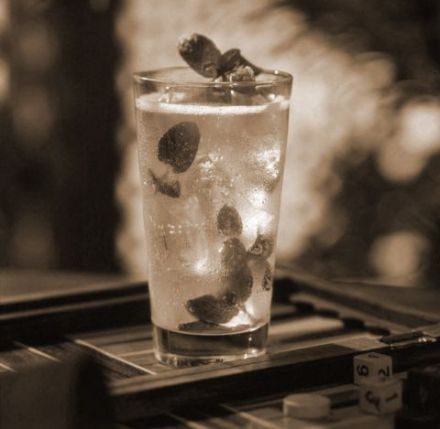 |
All about rhum > History of the Original Mojito
By Bacardi
Like the endless fields of sugarcane and the rows of rich tobacco, a drink called the Mojito seems to have sprung from the Cuban heartland and captured the soul of its people. Yet the history of the Mojito is richer and more complex than it seems at first glance.
It begins in the 16th Century when, in an effort to control the riches from the Americas, Queen Elizabeth I of England sponsored and encouraged corsairs to plunder Spanish cities in the New World. One such corsair was Sir Francis Drake, whose cargo of Spanish treasure was valued at twice the amount of the Queen's annual income.
The unofficial date for the birth of the predecessor of the Mojito is 1586, when Captain Drake and his group of corsairs were considering whether or not to seize Aztec Gold stored in Havana's royal treasuries by sacking the city. The governor of Cuba was warned of Captain Drake's approach, giving him time to prepare the city’s defences.
Havana prepared for Captain Drake's onslaught and eventually 14 pirate sails appeared off the coast. To everyone's amazement, after several days of waiting, Captain Drake sailed away from the richest port in the West Indies after firing only a few minor shots. Captain Drake may have left Havana intact, but he did not leave without impacting the whole of Cuban civilization. His subordinate, Richard Drake, invented a cocktail known as the Draque, Drak or Drac in honour of his Captain.
During his adventures to seize and conquer other Spanish ports, Richard Drake introduced the recipe for a concoction of his own invention to the different local inhabitants who were unlucky enough to have crossed Captain Drake's path. In 1593, Queen Elizabeth l granted Richard Drake the first major monopoly patent for the production of Aqua-Composita, Aque Vitae, Vinegar, Alegar and other spirits as a reward for his services to Captain Drake.
The Draque, made originally by combining aguardiente (the crude forerunner of rum), sugar, fresh lime and mint, was served with a wooden spoon with a cock's tail handle and consumed mainly for medicinal purposes. On one occasion, during one of the worst epidemics of cholera to attack the population of Havana, the narrator Ramón de Paula describes: "Every day at eleven o'clock, I consume a little Draque made from aquardiente and I am doing very well.”
It was during the mid 1800s, around the time Don Facundo Bacardi Massó established the original Bacardi Company, that the original recipe for the Draque changed. Becoming the Mojito, the aquardiente was substituted for rum, or more specifically BACARDI rum. In 1940, Cuban playwright and poet Federick Villoch celebrated this historical occurrence by proclaiming:
"...when aquardiente was replaced with rum, the Draque was to be called a Mojito.”
The name Mojito comes from the African word “mojo,” which means to place a little spell. Today, Cuba's oldest cocktail and world-famous BACARDI rum continues to place a little spell on all those who drink it, recalling the days of the most famous Corsair of them all, Sir Francis Drake, the cocktail's inventor, Richard Drake and the man who perfected the original Mojito cocktail recipe by creating the world’s first light, aged rum, Don Facundo Bacardi.

-

 Recipes
Recipes
-

 Products
Products
-

 Entertaining
Entertaining
-

 Chefs
Chefs
-

 Hints & Tips
Hints & Tips
-

 Glossaries
Glossaries








